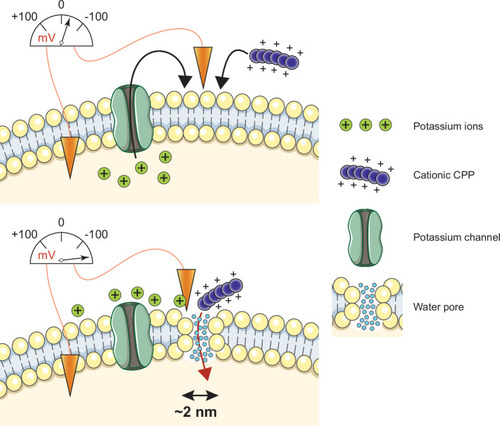Figure 7.
- ID
- ZDB-FIG-211207-89
- Publication
- Trofimenko et al., 2021 - Genetic, cellular and structural characterization of the membrane potential-dependent cell-penetrating peptide translocation pore
- Other Figures
- All Figure Page
- Back to All Figure Page
|
Cationic CPP translocation across cellular membranes is favored by the opening of potassium channels or by hyperpolarizing drugs, such as valinomycin. This sets a sufficiently low membrane potential permissive for CPP direct translocation. When cationic CPPs bind to these already polarized membranes, they induce megapolarization (i.e. a membrane potential estimated to be –150 mV or lower). This leads to the formation of water pores that are then used by CPPs to enter cells.
|

